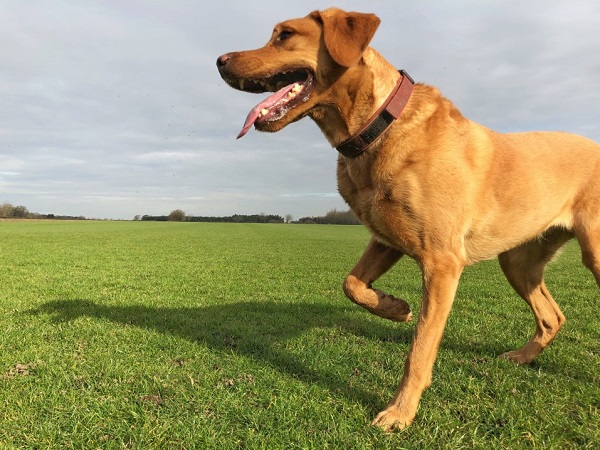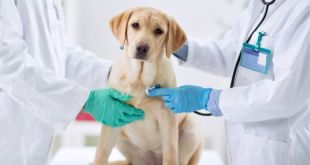Limping or lameness in dogs is a common ailment, and the most prominent reasons are injuries, allergies, and illnesses, to name a few. As part of the treatment, the doctors identify the cause of limping.
It can be rather hard to see your dog in discomfort or pain. But if you know the reason, it would be much easier to dull the pain somewhat, at least.
Why does a dog limp?
Just as it happens with humans, there are several reasons why dogs may limp. First, it could be an injury that has affected the bones, skin, or ligaments.
Maybe it is an allergic reaction, or perhaps they have been bitten by an insect. In dogs and cats – the common reason for limping is an injury to their front leg, dislocation of joints, and broken bones.
If the dog is limping due to a joint problem such as arthritis, the veterinarian might prescribe supplements or medicines that help the dog become more mobile than before. The issue of gradual onset limping happens in joint diseases such as elbow or hip dysplasia. Such a condition becomes worse with time.
If the limping is sudden, it can be due to trauma or an injury.
The common reasons for dogs limping
The reasons for lameness among dogs are enumerated below:
- paw injury
- muscle strain
- insect bites
- arthritis in case of senior dogs
- joint inflammation
If a foreign object such as glass, thorn, or nail gets stuck in their paws, it could lead them to limp. In addition, if they have muscle strain, broken bones, muscle sprain, or torn ligaments, it may make it extremely difficult for the dog to walk, let alone run. Insect bites such as ticks and mosquitoes can also affect their legs, thus causing them to become lame.
This problem also happens in the case of bee stings and other cuts. Arthritis can be a problem in senior dogs. Apart from making it difficult for them to move, it can also affect their overall health.
Inflammation in joints, such as dysplasia and arthritis, can cause a dog to limp. In senior dogs, joint issues such as osteoarthritis are a common phenomenon. It occurs due to the extra weight they put on at that stage of their lives.
Some younger pups may suffer from osteochondritis dissecans – mainly when these babies are growing up.
Read Also: Ways To Monitor Your Dog’s Health At Home
When should you start getting worried about your dog limping?
There are symptoms where you must not waste any time and get in touch with the vet as soon as possible. These circumstances or situations are described below:
- inability to stand or walk with almost negligible movement in their legs
- extreme trembling or shivering
- dragging the leg when they are walking
- too tense body – something that is unusual
- signs of pain, such as whimpering, excessive panting, and crying
- licking their paws
Why does a dog limp without any sign of pain?
It will be considered unusual if a dog is limping without showing any clear sign of pain, such as yelping. In such a case, as a pet parent, it can be difficult to assess your baby’s pain level. If a dog suffers from chronic pain, it would not vocally express its discomfort.
They tend to do this somehow or the other. The best way to approach this situation is by checking their energy and activity levels. Try and find out if they are more tired than they are.
Do they become more active when you provide them with pain medication? Before administering any medicine, such as a pain reliever, to your dog, seek permission from your vet.
How to treat a limping dog at home
Physically examine the limp of your dog and provide them with first aid. Watch the dog walk and find out the leg they are favoring. See if they are carrying the leg when walking while balancing on all fours while they standstill.
In this case, one of the biggest topics of debate has been administering pain medicines to dogs. The significant reason for this is the plethora of OTC (over-the-counter) medicines you have available in this regard.
It can be complicated to determine which to administer and which to avoid. Remember to not give them any painkiller meant for humans as it could be poisonous for them. If you see any foreign object, such as a thorn or a splinter, has lodged into their thorn, be gentle while removing the same.
After that, clean the wound and apply an antibiotic ointment. If your dog’s leg is swollen because of a bruise or sprain, treat the affected leg with an ice pack twice daily.
If it is an abscess or wound, get in touch with a vet to help deal with the problem and get information on the later course of treatment that can be followed in this case. No matter why your baby is limping, ensure they get the right anti-inflammatory medicines and sufficient rest. Proper rest helps to recuperate.
How do you take them for treatment?
Logistical arrangements to take your limping dog to the vet could be tricky. The best thing to do is to let the hospital staff take care of such situations as they have proper training on all arrangements that need to be made.
It also helps that they have a pet ambulance that comes in handy in such conditions. However, if you drive them to the doctor, make sure you put them in a crate to avoid further injuries.
Conclusion
Dog limping can signify various health issues, and it is important to address them promptly. The cause of limping in dogs can range from simple injuries to more serious underlying conditions.
It is important to observe your dog’s behavior and seek veterinary assistance if the limping persists or is accompanied by other symptoms.
With proper diagnosis and treatment, most dogs can recover from limping and return to normal activities. As a pet owner, it is essential to stay vigilant and provide the necessary care and attention to keep your dog happy and healthy.
 DogExpress
DogExpress



















 in Chandigarh, India.
in Chandigarh, India. 

